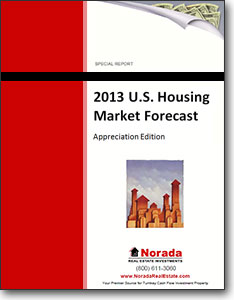
In Why are Billionaires Buffett and Trump Bullish on Real Estate Right Now? part 1, we stated that the Federal Reserve is committed to stable, steady long-term inflation.
But what about all this talk of hyper-inflation?
There are some doom-and-gloomers out there heralding hyper-inflation. Hyper-inflation means you wake up in the morning and a pound of coffee is $5, but when you go back that afternoon, it’s $7 and by the following morning it’s $10. In other words, the dollar is in free fall and it takes more and more dollars to buy the same goods and services. It’s happened many times in other countries in just the last 50 years. It’s ugly, especially for those who don’t know how to see it coming, how to prepare and what to do when it happens.
Now we understand the argument for hyper-inflation and it’s a good one. So let’s take a look at why real estate right now makes so much sense.
 I've spoken many times on my radio show about how fear is used to move us. Well, recently I spotted a great example. Just last week I wrote about how a mortgage “expert” was predicting a “
I've spoken many times on my radio show about how fear is used to move us. Well, recently I spotted a great example. Just last week I wrote about how a mortgage “expert” was predicting a “
 You’ve seen the headlines. The combination of lower prices, increased rents and a weak dollar are drawing investor capital from all around the globe and funneling it into American housing. According to NAR, foreign investment is US real estate has increased by 20% in the 12 months ending march 2011, totaling $82 billion in just one year. What’s missing in most of these stories is why.
You’ve seen the headlines. The combination of lower prices, increased rents and a weak dollar are drawing investor capital from all around the globe and funneling it into American housing. According to NAR, foreign investment is US real estate has increased by 20% in the 12 months ending march 2011, totaling $82 billion in just one year. What’s missing in most of these stories is why.


